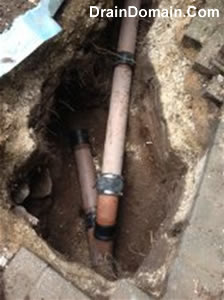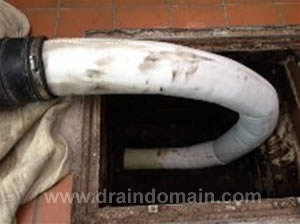
Most Visited
Rats In Your Home
Drain Flies
Why Drains Block
Internal Venting
Who`s Drain Is It ?
Drain Surveys
No-Dig Repairs
Drain Location
Drain Rods Stuck
Find A Contractor
Drain Pipe Work
Clay Drain Pipes
Plastic Pipe Work
Pitch Fibre Pipes
Cast Iron Pipes
Concrete Pipes
Drainage Parts
Drain Gullies
Dropshafts
Interceptor Traps
Soil Vent Pipes
Anti-Flood Valves
Manholes
Drain Repairs
Excavations
Drain Lining
Patch Lining
Pipe Bursting
Re-Rounding
Drainage
Investigations
Drain Surveys
Sonar Tracing
Last updated 7 January, 2014
draindmain.com > site map > drain repair techniques
Drain Repair Techniques
The drain repair method that suits your system will depend on the actual cause of the damage, the severity of the damage and the available access into the system, there are scenarios where a system can be repaired without any disruption at all but in reality we tend to use a combination of excavation and no-dig repairs particularly on domestic systems. A detailed camera inspection is usually the first step to assess the condition of the system and the extent of any damage, from this your contractor will decide which of the following methods can be used. Drain Excavation and RepairIt pains me to say this but there are occasions when the only answer is to excavate and repair a broken drain, if there is a complete collapse on the vitrified clay drain that a drain jetter can not shift then its time to get the shovels out and dig. Other scenarios such as severe displacement of drain joints or severe fractures can put a system beyond a drain lining method as the repair moulds itself to the host pipe. You can read more here on drain excavation works
|
 There was a time when your only option when it came to drain repair was an excavation however the development of drain camera inspection systems over the years has led to the plethora of no-dig solutions.
There was a time when your only option when it came to drain repair was an excavation however the development of drain camera inspection systems over the years has led to the plethora of no-dig solutions. Drain Lining, Drain Re-Lining, Cipp Lining
Drain Lining, Drain Re-Lining, Cipp Lining
